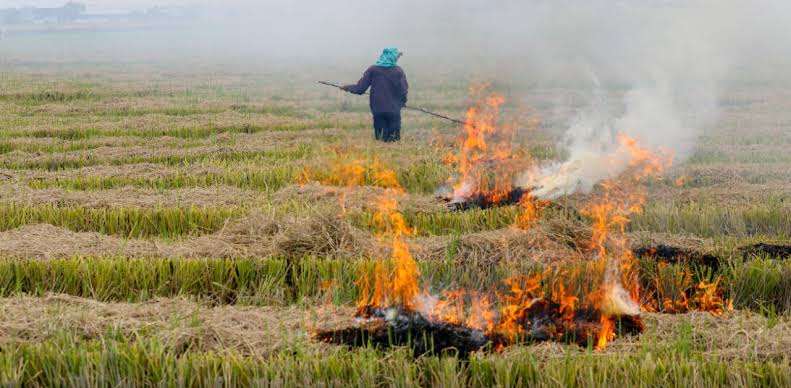Chandigarh, October 7, 2025: Haryana has achieved a remarkable 95% reduction in stubble burning incidents compared to last year, thanks to the state government’s strict enforcement measures, advanced monitoring systems, and continuous efforts to promote alternative crop residue management among farmers.
According to a report by the Indian Council of Agricultural Research (ICAR), only seven active fire incidents related to paddy residue burning were recorded across the state till October 6, 2025, compared to 150 incidents during the 2024–25 season.
The information was shared during a high-level review meeting chaired by Chief Secretary Anurag Rastogi, who commended the achievement as a result of strong coordination between the state’s agricultural and administrative systems. He said the initiative has not only improved air quality but also set a new example in environmental sustainability.
Rastogi directed officials to maintain vigilance throughout the paddy harvesting season to ensure continued progress toward clean air and sustainable agriculture.
Officials informed that Parali Protection Forces have been deployed across all districts to ensure prompt action against violators. Out of the seven reported cases, three resulted in challans, FIRs, and red entries in agricultural records. Two cases were found unrelated to agriculture — one involved garbage burning in Faridabad and another industrial waste burning in Sonipat.
A total of 9,036 nodal officers have been deployed across Haryana, exceeding the required strength of 8,494. Each officer is responsible for monitoring 50 farmers in red and yellow zones and 100 in other areas. They are being trained through a new mobile application to communicate with farmers, oversee machinery use, and report fire incidents in real time.
The state has made notable progress in providing machinery to farmers as an alternative to stubble burning. About 90% of Crop Residue Management (CRM) machinery identification has been completed, with 51,526 machines operational. Procurement of new machinery is also advancing rapidly, with 94.74% of the process completed. Out of 14,088 machines selected through a lottery system, 8,213 permits have been downloaded, and 7,781 bills uploaded. Districts like Faridabad, Jhajjar, and Rohtak have achieved over 98% progress.
To promote the utilization of crop residue, the state government has partnered with the Indian Oil Corporation Limited (IOCL) for its Panipat ethanol plant. The plant plans to purchase 30,000 metric tonnes of stubble from Panipat and 1.7 lakh metric tonnes from nearby districts, offering farmers a profitable alternative to burning while boosting clean, renewable fuel production.
Following directions from the Supreme Court and the Commission for Air Quality Management (CAQM), the Haryana government has adopted a zero-tolerance policy against stubble burning. Registered farmers under the “Meri Fasal Mera Byora” portal are being sent weekly SMS alerts warning of strict penalties, including challans, FIRs, and red entries in land records for violations.
Additionally, the state has launched a comprehensive gap analysis to ensure adequate storage infrastructure for crop residue. Five districts have identified a requirement for 205 additional acres of panchayat land. Kurukshetra has already provided the required land, while proposals in Karnal, Panipat, and Sonipat are being finalized. In Ambala, aggregators have chosen to use private land instead of panchayat property for residue storage.
With its firm commitment, Haryana continues to emerge as a leader in sustainable agriculture and environmental protection, setting a strong example for other states to follow.
Haryana Achieves 95% Reduction in Stubble Burning Cases, Sets National Benchmark for Clean Farming

